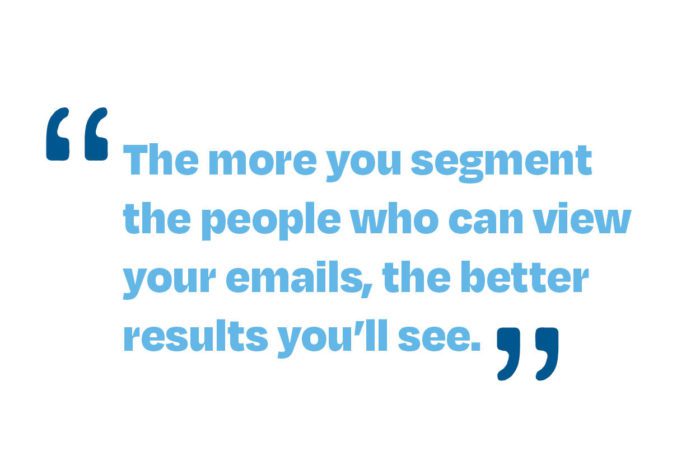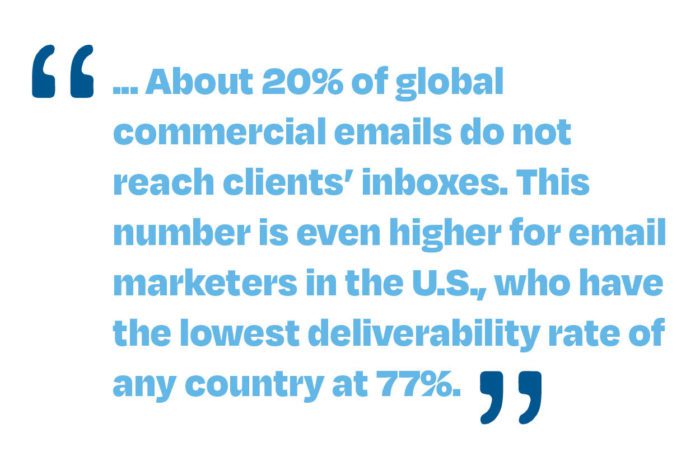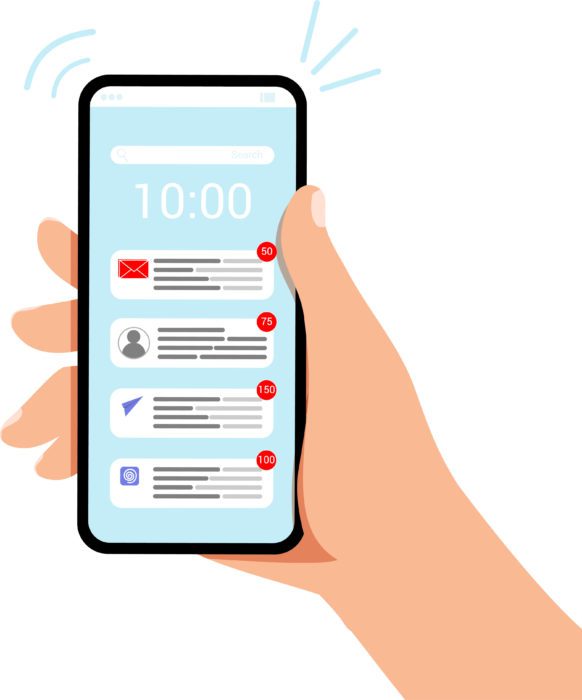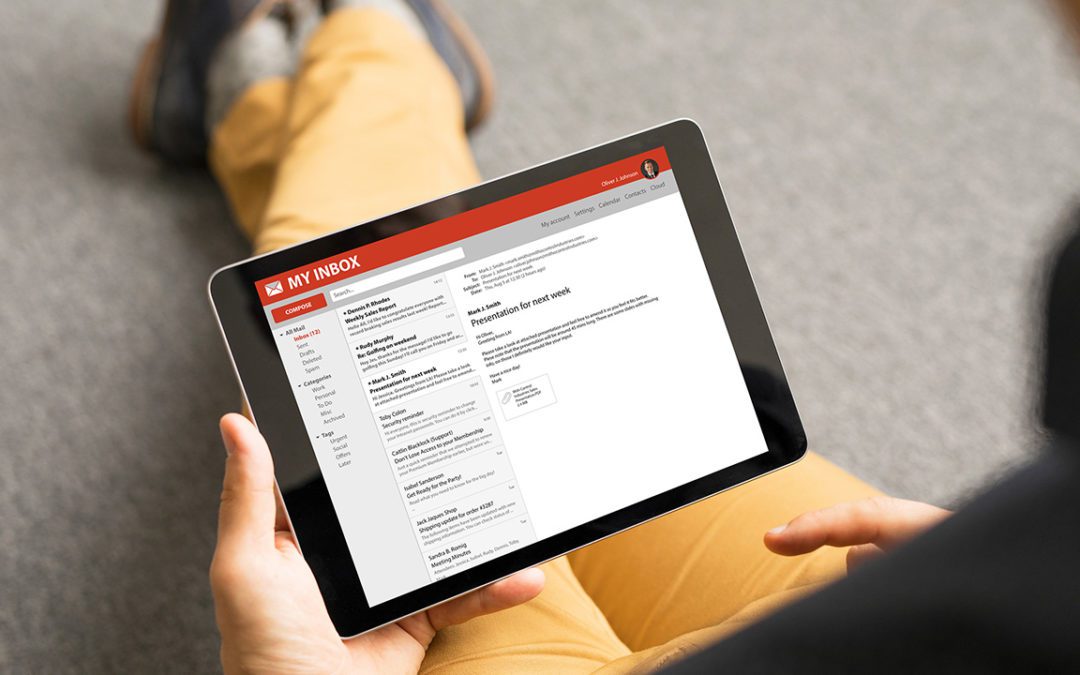Do you want an easy and affordable way to connect with your audience and showcase your company’s products, services, or discounts? Then you should try your hand at email marketing. Some may argue that email marketing is dead, but they are wrong. According to HubSpot, 64% of small businesses still use emails to reach their customers, and 73% of consumers prefer that businesses communicate through email. However, with these numbers showing the value of this kind of correspondence, business owners may be wondering how to increase open rates on emails.

Emailing can be a highly effective form of marketing, but to increase your open rates and highlight your services, you must incorporate these 5 elements into your email marketing campaign.
#1 Personalizing Your Emails
Using an email automation platform can make it easy to get into a routine. But don’t forget to utilize personalization tactics so you can effectively connect with your consumers. Your subscribers should feel like your VIPs and not like they’re just another email address in your database. A great way to convey the feeling of being known and acknowledged is to address your customers by name. Simply using their name will help you create stronger bonds with them from the very beginning.
But it doesn’t end there — you must send out timely and relevant content that your subscribers can’t resist. Send promotional emails on their birthdays or implement dynamic marketing that will resonate with your recipients.
However, as you begin to develop ideas on how to increase open rates on emails, remember to make your subject line eye-catching. Further into this article, you’ll learn more about how to avoid spam filters and create a subject line that will boost your open rates on emails.
#2 Incorporating Segmentation
The more you segment the people who can view your emails, the better results you’ll see. You can divide people by age, gender, marital status, location, or the products they’re interested in. Incorporating this strategy will help your audience get more value from your emails when they are specific and relevant to your consumers.

#3 Welcoming Your Customers Immediately
Don’t wait weeks or months to reach out to your customers for the first time. They should be engaged from the beginning — while you’re fresh on their minds. Welcome emails are vital for the rest of your email marketing campaigns because they help you build brand awareness. It informs your subscribers what they can expect from your company and sets the tone moving forward.

In your welcome email, be sure you have a compelling subject line that ensures recipients will open your email. Then, you can follow by sharing special offers, important content, and what they can expect from you and your brand. Always remember to have an option for recipients to opt out — nothing can sour a business relationship more than receiving unwanted emails.
#4 Starting To Schedule Your Emails
Suppose you have a blog highlighting your services and providing valuable information for your customers and prospects. In that case, you’ll likely have a content strategy. This means you’ll schedule the time you want your post to go live on your website or pay attention to social media and its algorithms to see which time of day is the best to post. You can use this same strategy with your emails!
The time that your emails hit your consumers’ inboxes makes a huge difference in your performance metrics. In fact, research shows the best time to send emails is Tuesday–Thursday from 8 a.m.–5 p.m. Study your metrics and numbers to discover the best time to send and schedule your emails. Your own data will provide you with all the information you need.
#5 Tracking Metrics
Start tracking metrics with the first email you send. By doing this, you’ll better understand what tactics and campaigns are working. This will help you know how many people are opening your emails, which links they’re clicking on, and whether or not they’ve bought any of your products through your email. While tracking your metrics, pay close attention to a few things. You first want to look at your email’s deliverability. Is your email even making it to their inbox? Or is it getting marked as spam?
The data you collect is valuable because it will help you improve your process in your next email marketing campaign — or with your next email. In the end, when you continuously track your metrics, you will begin to answer the question of how to increase open rates on emails.
But let’s take a closer look at why some emails will end up in the trash. When trying to figure out your secret recipe on how to increase open rates on emails, it can be frustrating when you’re not seeing any engagement. It’s estimated that about 20% of global commercial emails do not reach clients’ inboxes. This number is even higher for email marketers in the U.S., who have the lowest deliverability rate of any country at 77%.

While that news may be discouraging, email marketing is still the most relied-upon method for business-to-business advertising. With 87% of B2B content marketers using email to connect with their audience, it’s no wonder so many businesses are asking why their emails aren’t delivered successfully.
Beyond deliverability rates, there’s another issue. Your customers are not reading your emails. More than 40% of people stated that they have more than 50 unread emails in their inboxes throughout the day. This could be because almost 80% of users mentioned that the emails they receive are unimportant or not urgent. Your email may have gotten lost in the sea of unread mail! Furthermore, a 2021 study in March found that only 17% of emails were opened — with a click-through rate of around 10%.
While this rate isn’t as dire as it may sound, considering that email marketing provides some of the highest ROI of any marketing channel due to its low cost, it’s still important to realize that tons of your emails are ending up in the trash.
So, why do so many emails go to the trash folder?
This is a complicated question, and the answer depends on why an email delivery is unsuccessful. If it’s because your emails are setting off spam filters or being routed to junk mail, you’re likely using words, codes, fonts, or images that trigger spam filters. In other words, you’re making those specific emails seem illegitimate. Later on in this article, we will dive further into spam filters and why your email copy matters.
But what about the emails that your clients delete or just don’t read?
Luckily, this answer might be simpler than you think. While the copy of your overall email is essential for improving your click-through rate, it is actually secondary to something else — your subject and taglines. This is because your customers make a split-second decision when they see your subject line about whether to open the email or not. That’s why it’s so essential to get it right. After all, if nobody opens your email, then nobody will click through it.
But how can you make sure you’re getting it right?
When it comes to picking a great subject line, few things are more effective than A/B Testing. This is when your email list is segmented into an “A” group and a “B” group — each receiving the same email with different subject lines. You can then track the response to these separate subject lines to see which group responded more favorably. This can reveal which subject lines are more compelling and what your audience is interested in.

What to Avoid
Aside from testing your subject line copy, avoid phrases that might sound gimmicky or off-putting to your readers. This awareness will help prevent those red flags in your emails. However, even if your email does get past spam filters, it may still set off “warning bells” in a recipient’s mind if the subject or tag lines seem suspicious. The copy in these two areas is the first thing customers see, and it can heavily influence the split decision to open your email or throw it out. That’s why you must ensure you stay away from the following 8 subject-line and content pitfalls that make your emails seem illegitimate.
Using ‘Free’
You may think that advertising free goodies in the subject line of your email will be a surefire way to get people interested in what you have to say. Unfortunately, this is not the case. Including subject lines with phrases like “100% free,” “sign up for free,” or “free gift” can get your email sent straight to spam.
Creating False Urgency
Whether it’s using excessive punctuation, all capital letters, or urging clients to “act now,” creating a false sense of urgency is one of the fastest ways to derail your email. This is because phishing schemes often utilize urgency to get people to make rash decisions based on fear, like giving over their credit card information to pay off a fabricated debt. You certainly don’t want your email to be perceived that way.
Talking About Money
Offering gift cards, cash prizes, or using the “$” symbol may make it seem like your offer is too good to be true. As the old saying goes, “If it’s too good to be true, then it probably is.” Your customers know this, so it’s probably best to mention these offers sparingly.
Linking To Unreputable Websites
Even if your email content is acceptable, the URLs in the copy still matter. Linking to dubious websites can make your email seem like a scam and can even get you reported as a phishing scheme.

Not Including An ‘Unsubscribe’ Button
This is actually a matter of adhering to anti-spam laws created by the Federal Trade Commission. These regulations require emails to provide an obvious way for the people on your mailing list to opt out of any commercial messages — so be sure to include an unsubscribe button on all your emails.
Using Abnormal Fonts
Not only does this make your emails harder to read, but it also appears fishy to email screening services. You may think your spooky Halloween font will set your email apart, but it will likely just make you and your email seem spooky.
Not Sending Emails From A Reputable Domain
Nobody will open an email from GregIsAPelican445@fishystuff.com — or at least they shouldn’t. Oftentimes phishing emails come from hacked email accounts that aren’t associated with a specific brand. So, sending emails from a personal account can be perceived the same way. All of your emails should come from an email address that makes your identity obvious.
Sending Too Many Emails
Depending on your industry, the ideal frequency for email campaigns may vary. However, if you notice a drop in subscribers on your mailing list after increasing your campaign frequency, you may want to reevaluate what an appropriate schedule would look like.

Spam filters are always adapting to protect consumers from unwanted communications, so it’s important to continuously evaluate what you might be doing to negatively impact the deliverability of your emails. By carefully crafting copy, monitoring your campaign’s metrics, and using A/B testing, you can shift your emails away from the trash and into your clients’ inboxes.
Email marketing can be your best friend if you use it efficiently. It just all comes down to incorporating more personalized, segmented, and carefully crafted emails — while also ensuring your subject line doesn’t cause your email to land in the spam folder.
By following the methods outlined above, you will improve your deliverability rates, get higher ROI, generate more leads, strengthen your relationships, and build email campaigns that will keep your brand and business stay top of mind.
So, the next time you ask yourself how to increase open rates on emails, reference this article. Your team at Newsletter Pro values your business, and we want to see you succeed. Our Retention Guide is full of expert tips to help you take your email campaigns to the next level. Fill out the form below to download your free copy today.


Recent Comments